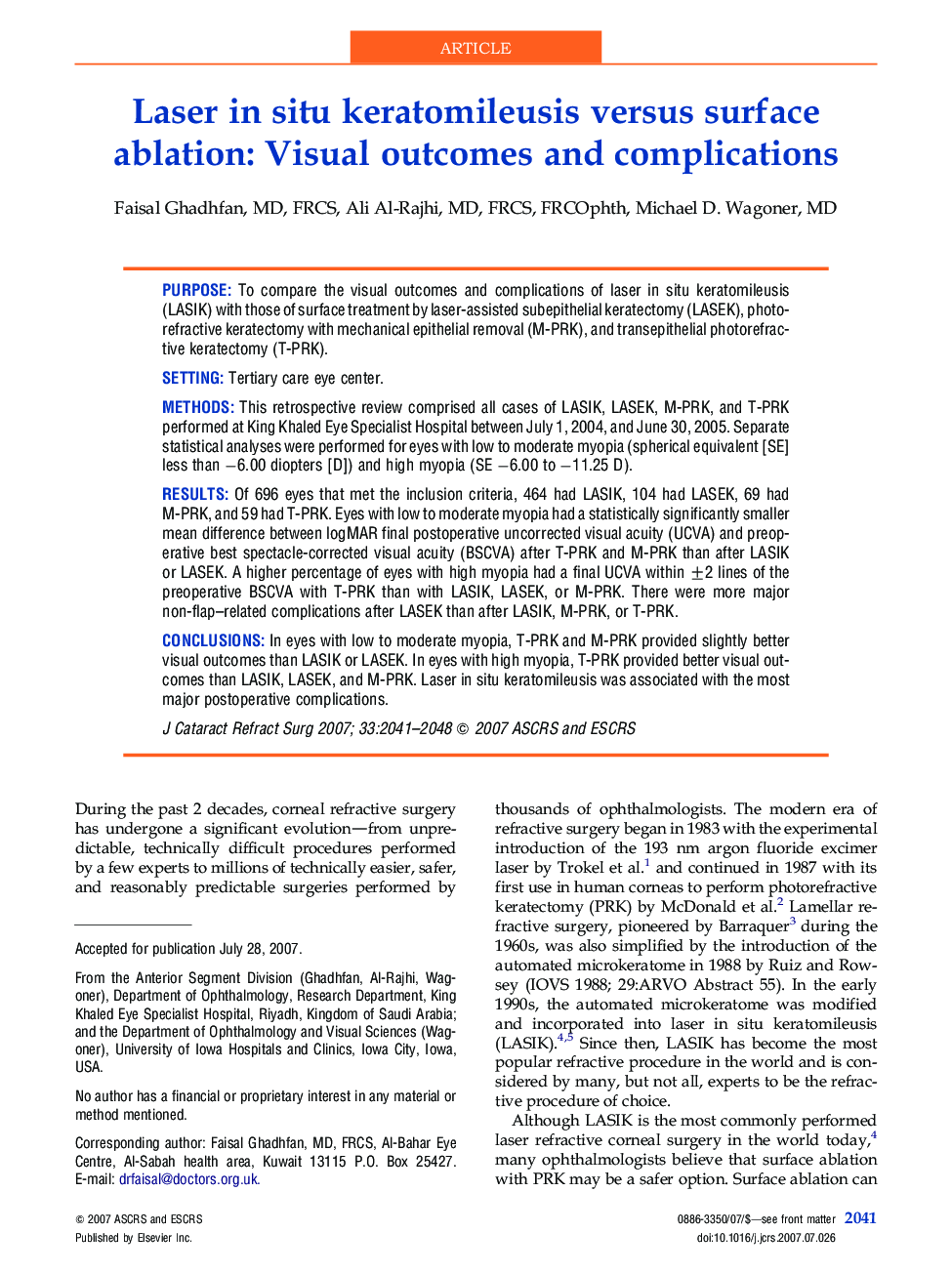| Article ID | Journal | Published Year | Pages | File Type |
|---|---|---|---|---|
| 4021057 | Journal of Cataract & Refractive Surgery | 2007 | 8 Pages |
PurposeTo compare the visual outcomes and complications of laser in situ keratomileusis (LASIK) with those of surface treatment by laser-assisted subepithelial keratectomy (LASEK), photorefractive keratectomy with mechanical epithelial removal (M-PRK), and transepithelial photorefractive keratectomy (T-PRK).SettingTertiary care eye center.MethodsThis retrospective review comprised all cases of LASIK, LASEK, M-PRK, and T-PRK performed at King Khaled Eye Specialist Hospital between July 1, 2004, and June 30, 2005. Separate statistical analyses were performed for eyes with low to moderate myopia (spherical equivalent [SE] less than −6.00 diopters [D]) and high myopia (SE −6.00 to −11.25 D).ResultsOf 696 eyes that met the inclusion criteria, 464 had LASIK, 104 had LASEK, 69 had M-PRK, and 59 had T-PRK. Eyes with low to moderate myopia had a statistically significantly smaller mean difference between logMAR final postoperative uncorrected visual acuity (UCVA) and preoperative best spectacle-corrected visual acuity (BSCVA) after T-PRK and M-PRK than after LASIK or LASEK. A higher percentage of eyes with high myopia had a final UCVA within ±2 lines of the preoperative BSCVA with T-PRK than with LASIK, LASEK, or M-PRK. There were more major non-flap–related complications after LASEK than after LASIK, M-PRK, or T-PRK.ConclusionsIn eyes with low to moderate myopia, T-PRK and M-PRK provided slightly better visual outcomes than LASIK or LASEK. In eyes with high myopia, T-PRK provided better visual outcomes than LASIK, LASEK, and M-PRK. Laser in situ keratomileusis was associated with the most major postoperative complications.
